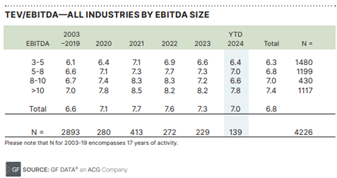How SBA’s New Citizenship Requirement Impacts Business Owners
The U.S. Small Business Administration (SBA) has announced significant updates to the eligibility requirements for its 7(a) and 504 loan programs, effective March 7, 2025. These changes focus on the citizenship status of borrowers and have a major impact on business operation loans and business transactions financed through the SBA loan guarantee program.
What’s Changed?
Previously, small business owners qualified for SBA loans even if up to 49% of their ownership was held by foreign investors. However, that flexibility has been eliminated. Under the new policy, to qualify for the loan guarantee program:
- Businesses must be 100% owned by U.S. citizens, U.S. nationals, or Lawful Permanent Residents (LPRs) to qualify for SBA 7(a) and 504 loans.
- Any ownership stake by foreign nationals, including minority shares, makes a business ineligible for SBA financing.
- Loan applicants must certify that none of the beneficial owners (individuals who directly or indirectly own or control a company) are ineligible persons.
Implications for Business Owners
These rule changes impact business owners in two significant ways:
- Startups and businesses with diverse ownership arrangements that would benefit from an SBA operating loan for working capital, purchasing equipment or refinancing debt will need to survey all their existing owners according to the new citizenship requirements. Any business with an ineligible owner will automatically be disqualified from SBA financing. Companies with non-citizen silent partners or outside investors must reassess their ownership structures or seek alternative funding.
- Another significant consequence of this policy change impacts business owners looking to sell their companies. The majority of US businesses sold for less than $5 million (the SBA program’s cap) utilize the loan guarantee program. If your potential buyer is an investor or investor group with members that are not U.S. citizen or lawful permanent resident, these new rules could complicate or even sink the transaction. Some implications are:
-
- Foreign Investors Are Disqualified: Even minority foreign ownership stakes are no longer allowed, meaning businesses that previously attracted foreign investors may now struggle to find financing options.
- Fewer Potential Buyers: Since SBA financing is a popular tool for business acquisitions, this restriction significantly reduces the pool of eligible buyers, potentially lowering demand for businesses seeking to sell.
- Seller Financing Might Be Necessary: Without SBA loan access, buyers may need alternative funding sources, which could include seller financing, private equity, or non-SBA commercial loans.
Who Is Now Ineligible?
According to the updated SBA guidelines, individuals in the following categories cannot own any portion of a business applying for 7(a) or 504 loans:
- Foreign nationals
- Individuals granted asylum
- Refugees
- Visa holders
- DACA recipients
- Undocumented immigrants
Even a 1% ownership stake by an ineligible person disqualifies the entire business from receiving SBA financing.
Why Did the SBA Make This Change?
SBA Administrator Kelly Loeffler stated that these reforms are part of a broader initiative to prioritize U.S. citizens and permanent residents in accessing federal funding. The updates also align SBA procedures more closely with federal immigration compliance policies.
What Should Business Owners Do?
If you are planning to apply for an SBA loan, consider the following steps:
- Audit Your Ownership Structure: Identify all individuals or entities with direct or indirect ownership, regardless of percentage.
- Verify Citizenship Status: Ensure all owners are U.S. citizens, U.S. nationals, or LPRs. Gather necessary documentation, such as passports or green cards, before applying.
- Reorganize Ownership if Needed: If your current structure includes ineligible owners, consider restructuring before applying or explore alternative financing options.
- Communicate Early with Your Lender: Inform your lender about your ownership structure upfront so they can guide you through compliance and avoid delays.
If you are planning to sell a business where buyers might look to the SBA loan program to finance the transaction:
- Select a transaction advisor that understands the SBA loan program and its new citizenship requirements.
- Be sure that your advisor understands how potential buyers propose to finance an acquisition of your business.
- If an SBA loan will be necessary to finance the transaction, make sure that your advisor verifies the citizenship status of prospective buyers early in the process. This could even include the buyer’s spouse in some instances.
- Consider alternative financing options if the SBA-backed loans are not available to otherwise qualified buyers.
Final Thoughts
The SBA’s policy shift represents one of the most significant changes to the loan guarantee program in recent years. While it may limit access to financing for some business owners, it ensures that SBA funding is directed toward those meeting strict citizenship criteria.
For business owners looking to sell, this change underscores the importance of understanding buyer eligibility and planning financing strategies accordingly. Business owners and their advisors must now consider ownership status as a critical eligibility factor, alongside business creditworthiness, tenure, and revenue.
By staying informed and proactive, business owners and business buyers can navigate these new requirements and secure the financing they need.
We can help you to sell your business. If you’d like to have a confidential, no commitment discussion on your exit plans or have related questions, please contact Adam Wiskind, Senior M&A Advisor at (707) 321-5186 or awiskind@exitstrategiesgroup.com.

 a
a







